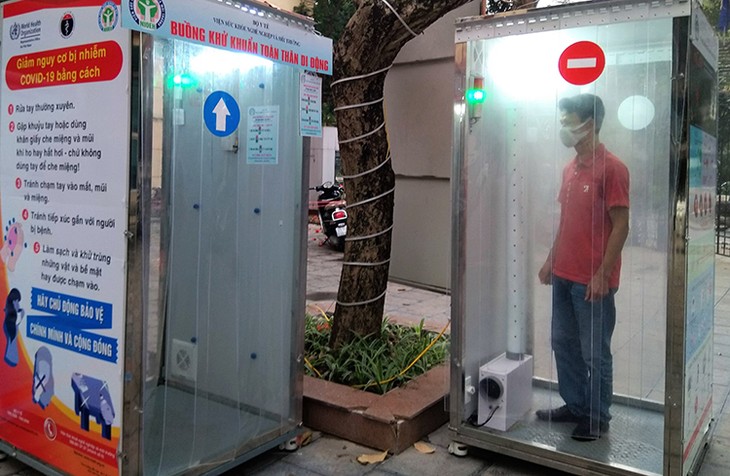(VOVWORLD) - Vietnamese experts have created a set of mobile disinfection chambers serving people in coronavirus infected areas. It takes 15 to 20 seconds to “clean” the whole body.
 The mobile disinfection chamber The mobile disinfection chamber |
The Institute of Occupational Health and Environment under the Ministry of Health collaborated with Hanoi University of Technology to design and manufacture the mobile disinfection chambers to prevent and combat COVID-19.
The system has a dry and a wet room, working on the principle of using an ionized saline solution (Anolyte) in the form of mist spraying the whole body to quickly disinfect the body surface. All disinfectant solutions are prepared by the Vietnam Academy of Science and Technology and ensure safety for sensitive skin areas.
Doctor Phung Xuan Lan, a member of the research team, said the system combines disinfection methods based on the Ministry of Health’s instructions. The process will remove bacteria and viruses on the body surface and the surface of clothes, shoes, and accessories.
"Our idea is to combine different disinfection methods using ozone, heat, and disinfectant spraying to create mutual effects to gain better results. We use ionized saline solution which is safe for human health. It’s important to develop a disinfection device with no side-effect on human health,” Doctor Lan said.
The main component of the wet chamber is a 360-degree fog mist sprayer, combined with an infrared sensor installed inside the chamber that automatically activates the disinfection spraying process when a person steps in.
The system is designed as a module so it can be easily installed, uninstalled, and transported. A complete installation system can disinfect up to 1,000 people per day.
Associate Professor, Doctor Hoang Thi Thu Huong, a member of the research team, said: “The mobile disinfection chamber aims to eliminate bacteria. After the epidemic, it can still be used at businesses which have hygienic requirements like food processing and pharmaceutical factories.”
The system has been piloted at some medical facilities and crowded areas to ensure safety and limit the spread of dangerous pathogens, especially in the complication of the COVID-19 epidemic.